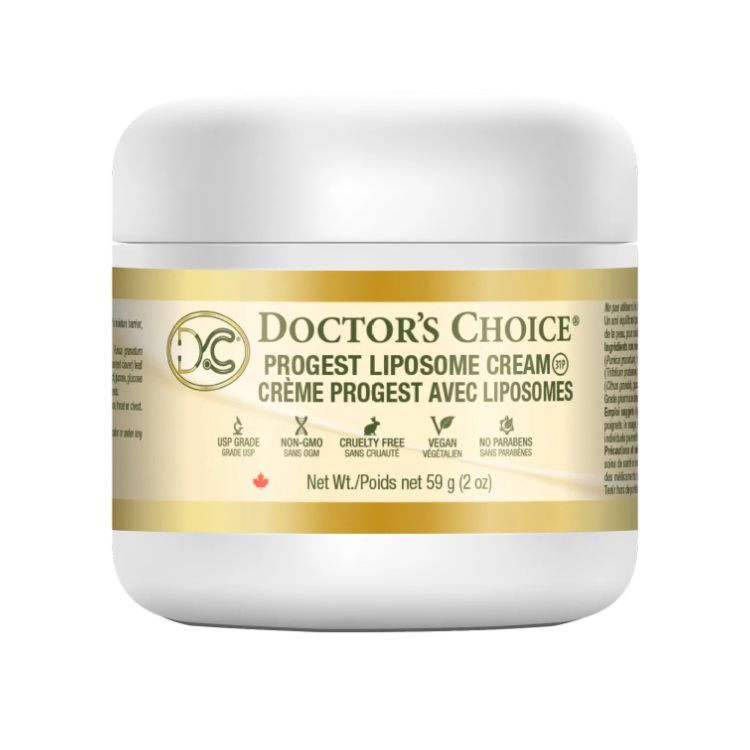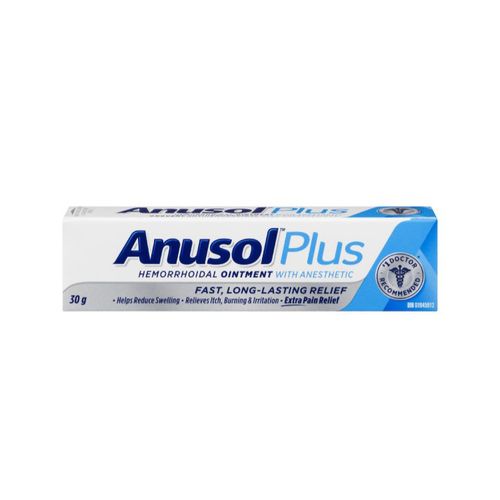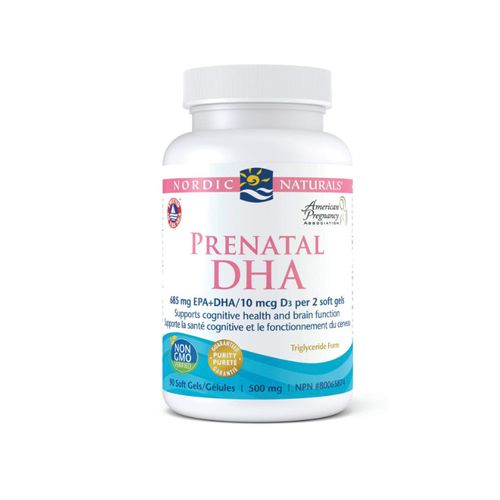Popular Searches
Top Brands
Doctor's Choice, Progest Liposome Cream, 59g
Suggested Use
Ingredients
Description
Doctor’s Choice Progest Liposome Cream is an excellent option to help balance the female hormones during the different phases of the cycles of life, from menstruation to menopause. The silky, luxurious texture of this all-natural cream makes “taking your medicine” a delight. To use this female balancing cream, massage it into your skin until it is noticeably absorbed. Progest cream can be applied to any area of the skin, such as the chest, breasts, lower abdomen, inner thighs, wrists/inner arms, and neck. It is recommended that you periodically rotate the area of the body where the cream is applied. Some women notice results from using Progest cream immediately, and for others it may take a few weeks. ProGest cream is absorbed into the skin and taken up by the fatty layer beneath; it is then transferred into the bloodstream, where it circulates to receptor sites throughout the body.
SUGGESTED USE OF PROGEST CREAM
Hormonal levels naturally rise and fall during the menstrual cycle, and some women experience negative symptoms known collectively as Pre-Menstrual Syndrome, or PMS. Some common symptoms of PMS are water retention, breast soreness, migraines, mood swings and cramping. Supplementing with natural Progest simulates the body’s own hormone production and helps to bring the body back to its equilibrium and may help decrease symptoms. Progest cream may help symptoms which occur with menstruation (dysmenorrhea) such as cramping, diarrhea, constipation and heavy bleeding. Everyone is different; some women require more Progest cream than others to help alleviate symptoms. The correct amount of Progest cream differs from one person to another, so start with the following schedule for the cream, and adjust as needed:
PREMENSTRUAL SYNDROME
Day 1-14, do not use the cream; day 15-18, use 1/8 tsp. twice per day; day 19-23, use 1/4 tsp. twice per day; day 24 to day period starts, use 1/2 tsp. twice per day. Adjust this schedule to meet your individual needs, gradually cutting back on the amount of cream used each month as improvements warrant. Using this cyclic schedule, day 1 is the first day of menstrual flow. Although the time of ovulation varies from woman to woman, the time from ovulation to menstruation is generally 12-14 days. For example, in a 28 day cycle, ovulation usually occurs on the 14th day, if you have a 35 day cycle, ovulation generally occurs around the 21st day. You will want to use natural Progest from ovulation until the onset of your period. The time of ovulation can be determined by the dramatic change in basal body temperature (a sudden fall and subsequent rise) and by change in vaginal secretion (from a thin discharge to a thick mucus). Some women also experience lower abdominal pains during ovulation. You do not need to use cream during menstruating; if, however, you experience cramps or other symptoms during menstruation, you may use Progest cream until the symptoms dissipate. Try rubbing the cream on your lower abdomen during menstrual cramping. If you have migraines during your cycle, rub cream on the back of your neck or on your temples. It is best to use the cream at the time of ovulation. If you have symptoms prior to ovulation (i.e., migraines), you may begin using Progest cream earlier, and use until menstruation begins. Try cutting back each month on the amount used, if symptoms return resume the above usage, and try to cut back the following month. Ultimately your goal is to be symptom-free; if symptoms recur, use Progest cream on an as-needed basis.
SUGGESTED USE FOR MENOPAUSAL SYMPTOMS
At the onset of menopause, estrogen and progesterone production by the ovaries tapers off, and many women experience symptoms such as vasomotor flushes (hot flashes), night sweats, mood changes, and vaginal dryness and/or discomfort. Many women also experience irregular periods, rather than regulate the menstrual cycle of a menopausal woman, natural pro-soy cream helps with many of the symptoms of menopause. These same symptoms may occur after hysterectomy (removal of the uterus) and / or oopherectomy (removal of the ovaries), which are sometimes referred to as “surgical menopause.” All women experience menopause differently: some women need more Progest cream than others. The correct amount of cream for one will not necessarily be right for another, we recommend using the following schedule as a guide.
MENOPAUSE (WHILE STILL MENSTRUATING)
Day 1 (period starts) -7, do not use cream; day 8-21, use 1/4 tsp. twice per day; day 22-1st day of next menstruation, use 1/2 tsp. twice per day. If you are no longer menstruating, follow the suggested schedule below, based on the calendar month. For vaginal dryness or discomfort use 1/4 – 1/2 tsp. once a day intervaginally, this may be in addition to or instead of your daily applications of the cream elsewhere. You may use cream for immediate relief of symptoms: for hot flashes or night sweats, use 1/4 – 1/2 tsp. every fifteen minutes for one hour following the episode. Some women find that they must use 1/2 tsp. twice per day, every day, to get relief from menopausal symptoms. If skipping the first seven days’ application leaves you with uncomfortable symptoms, you may use this cream every day of the month. If symptoms have not receded after several weeks use, then a small amount of Progest cream for a limited time may be appropriate.
POST-MENOPAUSAL
For vaginal dryness or discomfort use 1/4 – 1/2 tsp. once a day intervaginally, this may be in addition to or instead of your daily applications of the cream elsewhere. Some women find that they must use 1/2 tsp. twice per day, every day, to feel relief and balance, if not then skip the first seven days’ calendar application and use for the next 21 days and repeat this schedule.
Caution
Disclaimer
You should not use the information or services on this Site to diagnose or treat any health issues or for prescription of any medication or other treatment.
Always check the product label or packaging prior to using any product. If there are discrepancies, customers should follow the information provided on the product label or packaging.








